Viking Shieldmaidens: 6 Women of War
The Viking Age is often associated with brash warriors, longships and daring raids – but not all Viking warriors were men. The idea of shieldmaidens – female warriors who fought alongside men in battle – is a topic that fascinates historians and storytellers alike. Sagas and other legends tell stories of fierce and daring shieldmaidens, while medieval chronicles, archaeological finds and Viking burial practices all suggest that women did fight as warriors in the Norse world.
As the 12th century Danish historian Saxo Grammaticus wrote, “there were among them women who dressed themselves to look like men and spent almost every minute cultivating soldiers’ deeds”.
Here are six of the most famous or otherwise noteworthy shieldmaidens from across the Viking world.
What Is a Viking Shieldmaiden?
A Viking shieldmaiden was a woman who fought as a warrior in battle during the Viking Age. Shieldmaidens were distinct from most other women during the Viking Age in that they actively chose to live as warriors, donning armor, carrying weapons, and riding into battle. The figure of the shieldmaiden is primarily known through Norse sagas and medieval chronicles.
In these texts, shieldmaidens are depicted as fierce and honorable warriors who demand respect both on the battlefield and in society. They embody a Norse worldview that values courage, strength, and the power of individual warriors. Although the majority of Viking warriors were men, the existence of female warriors demonstrates that there was room in Viking culture—at least in legend—for women who stepped outside traditional gender roles. Shieldmaidens were often described as fiercely loyal to their leaders and comrades, as well as skilled in battle.
The historical accuracy of shieldmaidens is a matter of debate among scholars. Many of the references to female Viking warriors come from literary texts written several centuries after the events they describe. While the existence of shieldmaidens cannot be proven definitively, the presence of similar references in multiple sources suggests that the concept had some resonance in Viking society. References to women in battle reflect Viking views on gender, warfare, and honor.
In a society dominated by war, reputation, and personal honor, shieldmaidens served as a reminder that women could also be agents of their own destiny, using their courage and skill to earn a place among the warriors.
6 Viking Shieldmaidens of Legend & Lore

Lagertha: The Most Famous Viking Shieldmaiden
Arguably, the most famous of all shieldmaidens is Lagertha. Saxo Grammaticus, a 12th-century Danish historian, included her in his work Gesta Danorum, telling the tale of a fierce woman who fought in a civil war alongside the legendary Ragnar Lothbrok. As Ragnar was on the verge of defeat, Lagertha’s surprise counterattack turned the battle in his favor, winning her fame and the love of Ragnar.
In his writing, Saxo Grammaticus describes Lagertha as beautiful, yet deadly: “though a maiden, she had the courage of a man.” After the war, Ragnar asks for her hand in marriage, impressed by her as a warrior. They wed, have children, but ultimately do not stay together for long. Saxo Grammaticus reports that Ragnar would later leave Lagertha to marry another woman. Though not without some sadness, for Ragnar had a great respect for her and stated she had saved his life.
There are no firm historical records for Lagertha’s existence and Saxo Grammaticus’ work often melded the historic with the mythical, or put a Christianized, romantic spin on old pagan stories. However, his consistent description of her as a strong, independent, powerful woman set her apart from most Norse figures. Lagertha may have been based on oral tradition, or was perhaps the idealized characteristics of the Viking warrior woman.
Either way, Lagertha’s name has survived the centuries. She is a cultural symbol for what a shieldmaiden is, both in historical writings and in her more modern interpretations, from books to television.

Hervor: Wielder of the Cursed Sword Tyrfing
One of the more fascinating and prominent shieldmaidens of Norse myth is Hervor. Her story is that of a young woman determined to face her destiny, embrace her heritage, and claim a cursed weapon. Hervor is the subject of the medieval Icelandic legendary saga known as the Hervarar saga. We know from that story that she was unaware of her violent heritage while growing up. But once she became aware of it, she put on male clothing, armed herself, and set sail for the haunted island where her forefathers lived to claim the cursed sword Tyrfing.
One of the most striking moments in the saga of Hervor is the scene where she stands by the burial mound of her father, Angantyr, and commands him to hand over the sword to her. At this point in the story, she has shown extraordinary mettle, strength, and willpower. The grave burns with fire, voices speak, and the sword refuses to budge. But Hervor is having none of it. In this heroic feat, Hervor earns the respect of the undead, and after receiving the sword from her father, she departs for home to begin her life as a warrior in earnest.
Hervor continues to lead a life full of martial exploits and quests, as she takes the sword and journeys all across the Norse world to battle in the name of glory. She later even forsakes the life of a warrior and eventually has children of her own. It should be noted here that while Hervor successfully navigates the saga, the sword still has a role to play in future calamities through her descendants. The readers of Hervarar saga are assured that there is a significant cost to her father’s pride and anger. The sword ultimately leads to the death of her offspring and the downfall of a great dynasty.
The character of Hervor, although likely entirely fictional, is an interesting example of an idealized womanhood at a superhuman level from the ancient Norse world. While demonstrating bravery and martial prowess, she is also portrayed as quick-thinking and intelligent in her interactions with both living men and undead spirits. The Hervor saga is perhaps one of the most well-known stories of Norse women acting as agents of violence, fate, and legacy.
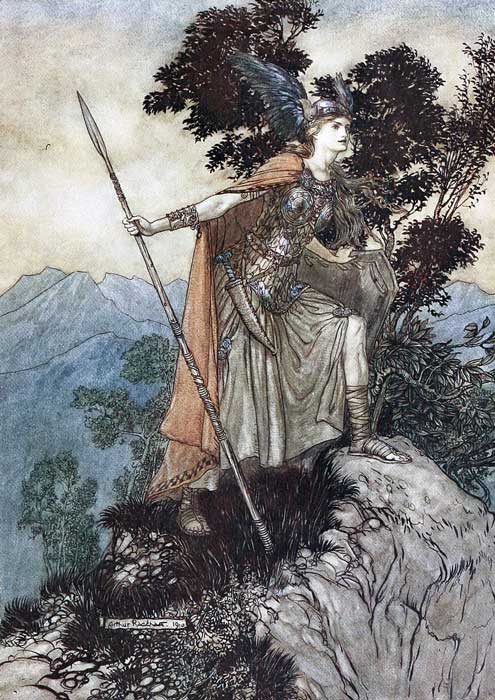
Brynhildr: The Mythic Shieldmaiden of Fire and Fate
Brynhildr is the legendary shieldmaiden and one of the most powerful women of Norse mythology. Brynhildr, also known as Brynhild or Brynhildr Buðladóttir, features in both the Völsunga saga and Poetic Edda, where she is found sleeping, bound by a ring of flame by Odin, in atonement for a previous offense. She promises to marry only the man who is brave enough to cross the ring of fire to reach her. The warrior Sigurd eventually awakens Brynhildr, who becomes his lover. However, after a series of deceptions and magic, their love is destroyed, and Brynhildr’s revenge seals their fate and that of their kin.
Brynhildr was essentially a mythical figure with little historical evidence. Still, she became a symbol of the values and ideas that the Vikings held in high regard, including honor, vengeance, and tragic love. She was portrayed as powerful, sometimes violent, but always resolute, with a commanding presence that could change the course of events. Her influence spread to subsequent literature and art, such as the Nibelungenlied and Wagner’s Ring Cycle.
In conclusion, while Brynhildr was not a historical shieldmaiden, her story and character have had a lasting impact. Her tale is not one of battlefield valor, but rather one of intense emotions and divine intervention. As a chooser of the slain, she holds a significant place in the pantheon, demonstrating strength in character and depth that continues to fascinate and inspire.
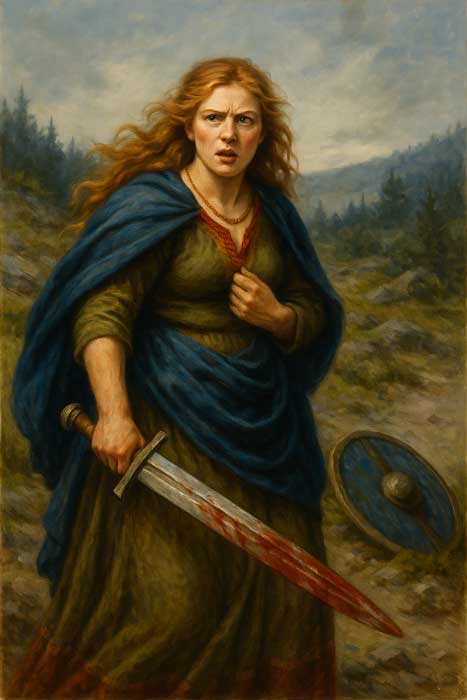
Freydís Eiríksdóttir: The Fierce Defender of Vinland
One of the very few recorded Viking women of note is Freydís Eiríksdóttir. The daughter of Erik the Red and sister of Leif Erikson is the subject of much controversy among historians and archaeologists. She is featured in The Saga of the Greenlanders for her courage in Vinland, the Viking name for North America. Her ferocity and lack of fear have led to her being considered as much of a shieldmaiden as her more famous male relatives. In recent times, Freydís Eiríksdóttir has been selected as one of 100 Great Vikings.
The saga itself is very brief. It simply relates how, on an expedition to Vinland, Freydís and others were attacked by people of the interior. Her male companions bolted, but Freydís, heavily pregnant as she was, stood her ground. She is said to have grabbed a sword that had been dropped by one of the men, and with a cry of defiance, she cut at her own naked breasts. The savagery and determination of her actions were such that the people of the interior turned tail and ran away. Freydís Eiríksdóttir is a very dubious shieldmaiden, but her courage in this incident has secured her an honored place.
The saga itself gives conflicting accounts of Freydís’ nature. Some accounts of her are pure evil and beyond the pale. In The Saga of the Greenlanders, she is an alternate to her appearance in The Saga of Erik the Red. The other saga is far more negative and portrays Freydís as someone who is virtually indefensible and beyond the moral compass of a 21st-century audience. It is challenging in the modern world to separate the historical Freydís Eiríksdóttir from the saga woman whose image has been primarily shaped by generations of oral storytelling and medieval saga writing.

Sigrdrífa: The Valkyrie Scholar of the Poetic Edda
In Norse mythology, Sigrdrífa (Old Norse: Sigrdrífa, IPA: [ˈsiɣɹ̥ˌdrîːvɑ]) is a valkyrie from the Poetic Edda. In some sources, she is equated with or the same as Brynhildr. As Sigrdrífa, the valkyrie, is the subject of the Sigrdrífumál, one of the poems of the Poetic Edda. The poem begins with the hero Sigurd finding a woman lying behind a wall of fire, clad in her shield and armor. She is an apparent shieldmaiden, but Sigrdrífa, rather than going into battle, turns out to be a kind of wise teacher. When she awakens, she imparts a store of runic knowledge, divine gifts, and practical advice to the hero Sigurd, and her blend of the martial with the mystical is fascinating.
The character and history of Sigrdrífa, as depicted in Norse mythology, shed light on the Norse views of the merging of warrior and deity. In addition to sleeping with her armor on and her sword between, Sigrdrífa is punished by Odin for killing the wrong man in battle. She must sleep until a man is found brave enough to pass through the flames and wake her. The valkyrie embodies both fate and retribution, concepts crucial to Viking warriors.
In myth, she is an image of a shieldmaiden imbued with the spiritual and esoteric knowledge associated with the valkyries. Sigrdrífa’s runes to Sigurd are for everything from healing and protection to wisdom and love. As such, Sigrdrífa is an image of the women in shieldmaiden legends who were great not only in battle but also in the lore of the old world.
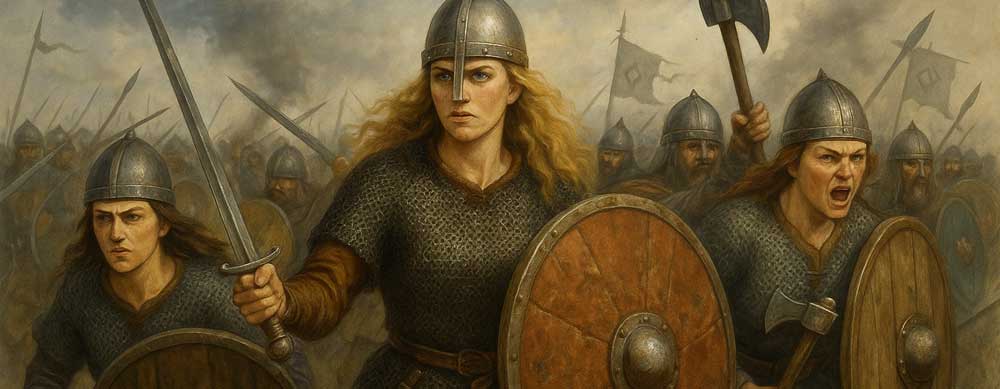
Visna, Veborg, and Hetha: Warriors of the Battle of Brávellir
Three of the earliest and best-known Viking-age shieldmaidens are Visna, Veborg, and Hetha. Chronicled by Saxo Grammaticus in Gesta Danorum, they were described as “heroic women”. These women are said to have taken part in the Battle of Brávellir, a legendary conflict on an epic scale between the Danish King Harald Hildetand and the Swedish King Sigurd Ring. The existence of the battle has been thought to be only legendary; however, the introduction of these three women warriors into the tale shows that they were depicted as more than mere anomalies.
Veborg is described as particularly bloodthirsty in battle, and she is said to have met the warrior Starke in a long, bloody duel. The text dwells at length on the quality of her fighting skills. Hetha is even more interesting. In addition to wielding the sword, she was said to have not only led an army but also been elected chieftain. Visna is barely mentioned, but is named along with these two women. Shieldmaiden or not, these are women who refuse to conform.
The work of Saxo is considered more a work of literature than of history. However, the image of Norse women is informed and influenced by these texts. Whether or not shieldmaidens like these existed as Saxo describes, the tales of their deeds created the popular image of the Viking shieldmaiden: a woman who earned respect through courage and prowess in battle.
Legacy of the Viking Shieldmaidens
The excavation and DNA testing of a famous warrior’s grave in Birka, Sweden, in 2017, shook the historical world. The Birka Warrior Grave, known as Bj 581, was believed to have belonged to a male warrior due to the numerous weapons and battle equipment buried along with the skeleton. However, genetic testing revealed that the remains were actually those of a female. (Her name is unknown) This has raised the question of the historical truth of shield maidens in Viking history and culture, as well as challenging some historical presumptions about the roles of men and women in warfare during the Viking Age.
The number of named shieldmaidens, in texts or sagas, is relatively small – perhaps less than 10. While some may be purely mythical, they are not forgotten. It is impossible to say how much of the history of the Viking world is comprised of memory versus myth. Still, the spirit of the independent Norse woman who fights with the best of the warriors is a powerful reminder that the Vikings valued the courage and strength of both men and women.


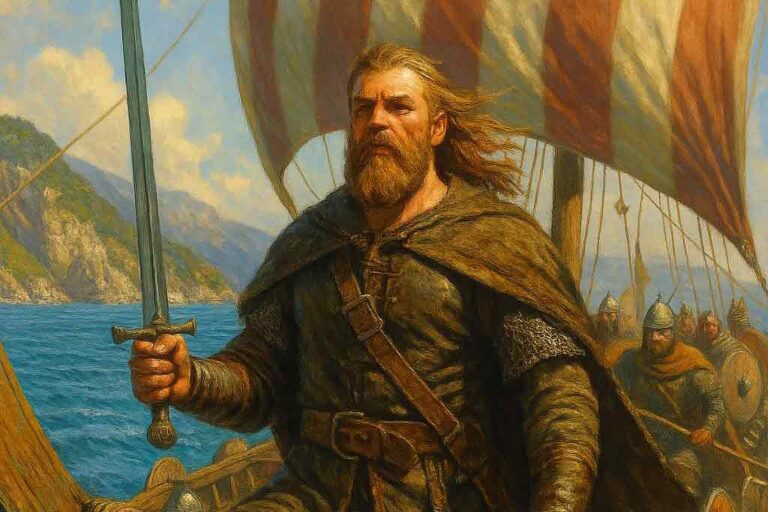

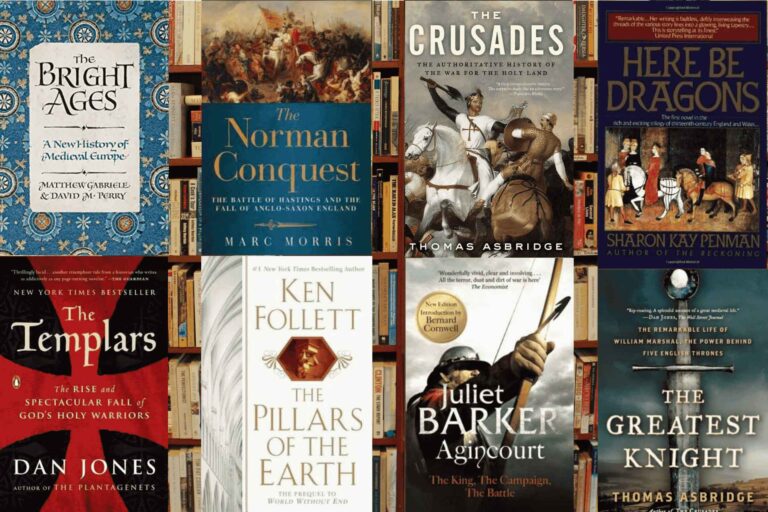

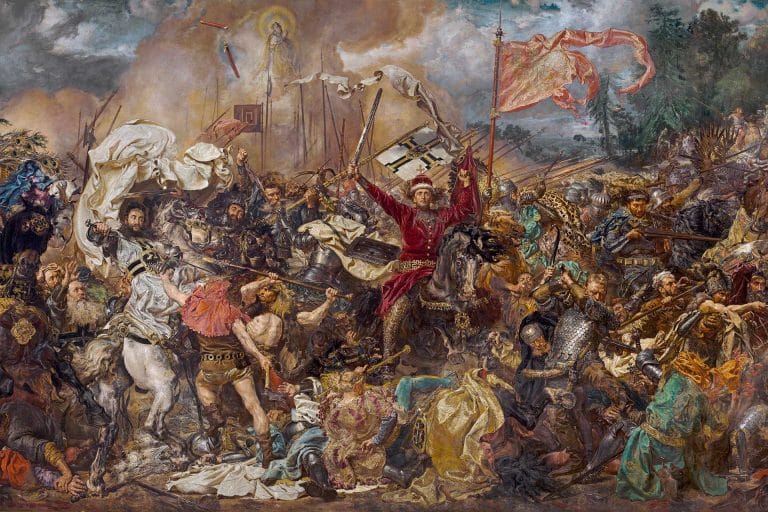

Great stuff!